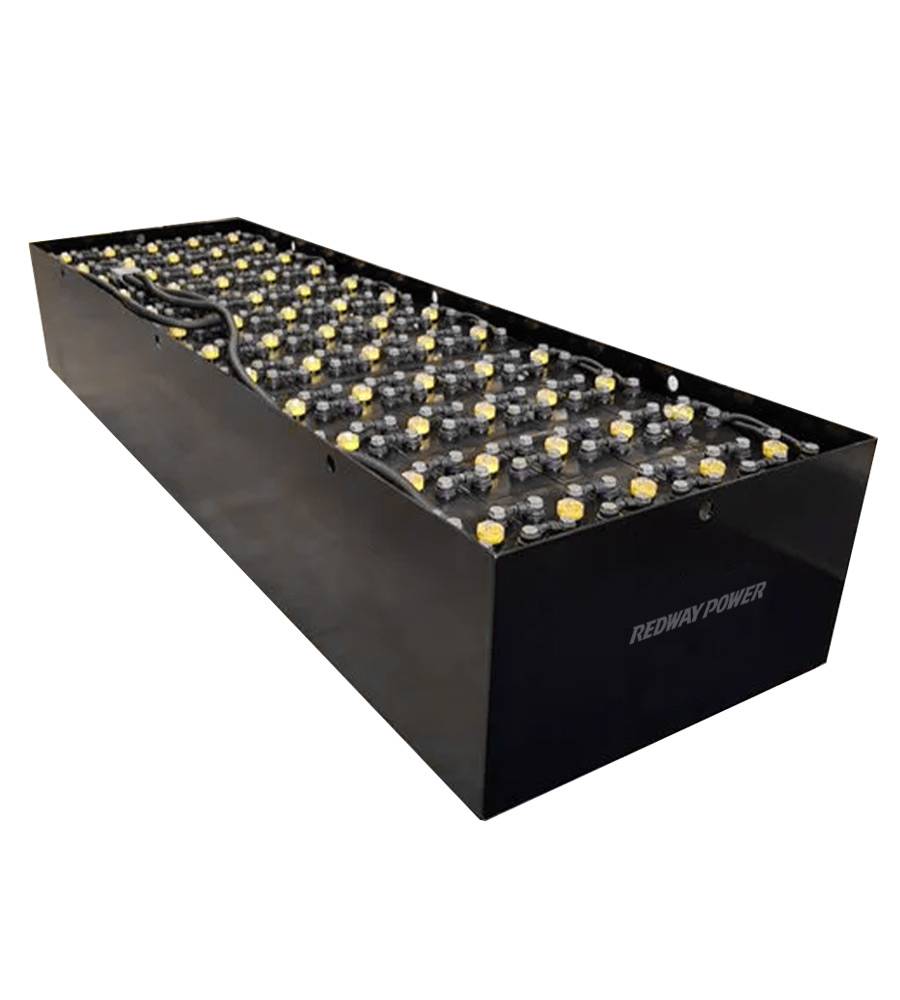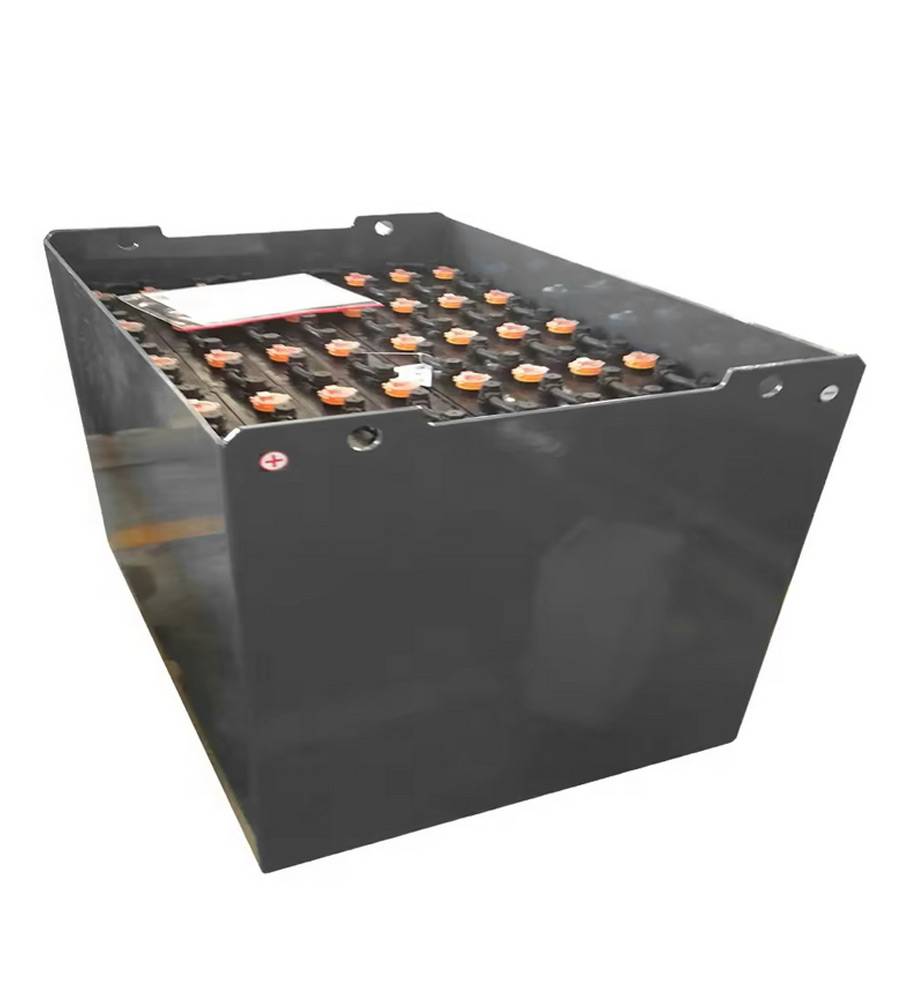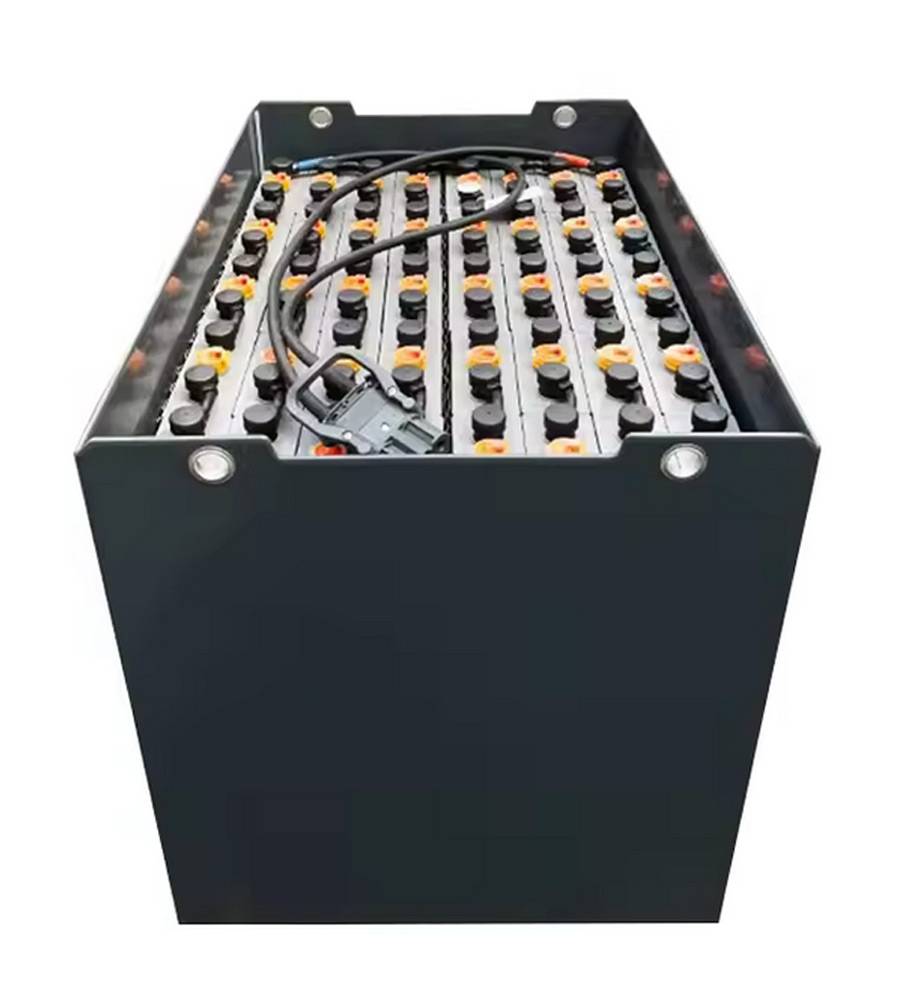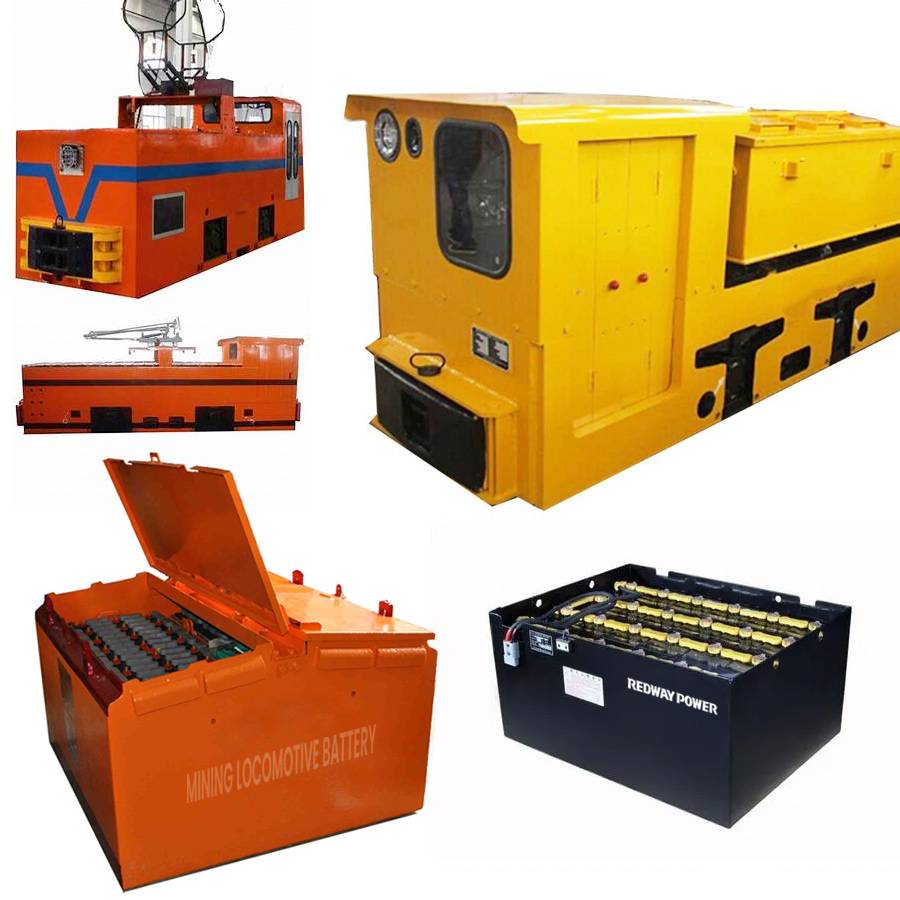Mining Locomotive Battery Manufacturer Factory
Mining Locomotive Battery, Mining Loco Battery, One-Stop Solution
Deep discharge cycle duty batteries play a crucial role in powering battery-operated mining locomotives within the challenging environment of underground mines. Redway Power's Mining Loco Lithium Battery have established a solid reputation for their reliability and effectiveness in deep underground mining operations. Our batteries have proven their mettle in various demanding scenarios of underground.
Battery Application:
All Tunnel Locomotives and all underground Mining, Traction Electric Locomotive.
Battery Customization:
Custom-built locomotive batteries are tailored to operate on customer-specified Voltage and Ah capacity, typically ranging from 48V~440V. The Ah capacity can vary up to approximately 960Ah, taking into account factors such as the locomotive design and pulling load. Should any customer have specific requirements, the voltage and Ah capacity can be further customized to meet their unique needs.
Best Mining Locomotive Battery Manufacturer 2024



What is the wholesale price of lithium battery?
You can click contact us or phone call us. We will give you multiple options of price.
Is Redway Power a trading company or factory?
Redway Power is a company with its own factory, integrating research, development, production, and sales.
How about the quality of Redway's LiFePo4 Battery product?
Redway Power boasts over 12 years of experience in LiFePO4 battery production and is an authorized supplier for CATL and BYD.
Can you do an OEM/ODM project?
Yes, we have engineers available to assist in designing and developing any related products.
What’s your MOQ?
MOQ varies according to battery voltage and capacity.
What payment terms can we accept?
We accept TT/Paypal/West Union, etc.
Mining Locomotive Battery Knowledge
Explore mining locomotive batteries used in the mining industry. Mining locomotive batteries are essential for powering battery locomotives in underground mining operations. These batteries are designed to provide reliable and efficient power, ensuring the safe transportation of materials and personnel in mining environments. Manufacturers and suppliers offer a variety of mining locomotive batteries that are suitable for different mining applications, including those for highly flammable gassy mines.
What Is the Voltage of a Locomotive Battery?
- Nominal Voltage: The voltage of a locomotive battery is typically 64 volts. This voltage is achieved by connecting 8 x 8-volt batteries in series. The nominal voltage ensures a stable power supply for the locomotive’s electrical systems.
- Open Circuit Voltage: The open circuit voltage of a locomotive battery is around 68.8 volts. This voltage represents the battery’s voltage when it is not connected to any load or charging source. It provides an indication of the battery’s state of charge.
- Float Charging Voltage: The float charging voltage of a locomotive battery is approximately 72 volts. This voltage is the optimal charging voltage to maintain the battery’s state of charge and ensure its longevity. It is the highest voltage that the locomotive’s power bus can reach.
What Is the Working Principle of Battery Locomotives?
- Onboard Energy Storage: Battery locomotives utilize onboard energy storage, typically in the form of batteries. These batteries store electrical energy that can be used to power the train. The energy stored in the batteries is harnessed to drive the locomotive’s motors, which generate the necessary propulsion.
- Powering the Locomotive: Battery locomotives can be powered in different ways. They can receive electrical energy from overhead lines or a third rail, similar to traditional electric locomotives. Alternatively, they can solely rely on the energy stored in the onboard batteries, making them independent of external power sources. This flexibility allows battery locomotives to operate in various environments and conditions.
- Propulsion and Efficiency: The electrical energy from the batteries is converted into mechanical energy by the locomotive’s motors. These motors drive the wheels, propelling the train forward. Battery locomotives offer efficient and sustainable operation, as they can utilize regenerative braking to recharge the batteries during deceleration, reducing energy waste.
Lead-Acid vs Lithium Batteries for Locomotives: Which Is the Better Choice?
- Energy Density and Weight: Lithium-ion batteries have a significant advantage over lead-acid batteries when it comes to energy density. They can store more energy in a smaller and lighter package. This advantage translates to improved performance and efficiency in locomotive applications.
- Performance and Efficiency: The higher energy density of lithium-ion batteries allows locomotives to operate for longer durations without the need for frequent recharging. This results in increased efficiency and reduced downtime. Additionally, lithium-ion batteries offer faster charging capabilities, further enhancing their performance.
- Longevity and Cost-effectiveness: Lithium-ion batteries generally have a longer lifespan compared to lead-acid batteries. They can withstand a higher number of charge-discharge cycles, reducing the need for frequent battery replacements. While lithium-ion batteries may have a higher upfront cost, their longer lifespan and improved performance make them a cost-effective choice in the long run.
What Disadvantages Do Battery Locomotives Have?
- Slow Recharge and Energy Dispersion: Batteries used in locomotives can be slow to recharge and disperse energy. This can impact the overall performance and efficiency of the locomotive, requiring careful management of energy resources.
- Maintenance Requirements: Battery locomotives require regular maintenance to ensure optimal performance. This includes monitoring battery health, replacing worn-out cells, and addressing any issues that may arise. Proper maintenance is crucial to maximize the lifespan and efficiency of the batteries.
- Reduced Ability in Cold Weather: Batteries may experience reduced performance and efficiency in cold weather conditions. Lower temperatures can affect the chemical reactions within the batteries, leading to decreased power output. Additional measures may be required to mitigate these effects in cold climates.
What Is the Weight of a Locomotive Battery?
- Weight Variations: The weight of a locomotive battery can vary depending on factors such as battery type, capacity, and technology. For iron-phosphate lithium-ion batteries, commonly used in battery locomotives, the weight can be around 21.5 tons. It’s important to consider these variations when planning and implementing battery-powered locomotives.
- Design Considerations: The weight of the battery affects the overall weight distribution and balance of the locomotive. Engineers must carefully factor in the battery weight to ensure stability, traction, and safe operation. Additionally, the weight of the battery impacts the payload capacity and energy efficiency of the locomotive.
- Performance and Efficiency: The weight of the battery directly influences the locomotive’s performance and efficiency. Heavier batteries may require more energy to propel the locomotive, affecting its range and operational capabilities. Manufacturers strive to optimize battery weight while maintaining sufficient energy storage for desired locomotive performance.
What is the process of mining lithium for batteries?

- Lithium extraction methods:
- Extraction from salt-flat brines through evaporation and chemical recovery.
- Extraction from lithium-bearing ores like spodumene through crushing, roasting, and acid leaching.
- Importance of lithium mining:
- Provides a steady supply of lithium for battery production.
- Meets the growing demand for battery-powered devices and electric vehicles.
Which are the top lithium-producing companies globally?
- Albemarle Corporation (NYSE:ALB):
- Market-leading lithium producer with a global presence.
- Contributes to the lithium supply chain for battery production.
- Sociedad Quimica y Minera de Chile (SQM) (NYSE:SQM):
- Prominent lithium producer based in Chile.
- Plays a significant role in the lithium market.
- Tianqi Lithium (SZSE:002466, HKEX:9696):
- Chinese lithium producer with a strong market presence.
- Contributes to the global lithium supply.
- Ganfeng Lithium (OTC Pink:GNENF, SZSE:002460, HKEX:1772):
- Leading lithium producer based in China.
- Supplies lithium for various industries, including battery manufacturing.
What are some lithium-ion mining companies?
- Albemarle Corporation (NYSE:ALB):
- Renowned lithium-ion mining company with a global presence.
- Contributes significantly to the global lithium supply.
- Sociedad Quimica y Minera de Chile (SQM) (NYSE:SQM):
- Prominent lithium-ion mining company based in Chile.
- Plays a vital role in the lithium market.
- Tianqi Lithium (SZSE:002466, HKEX:9696):
- Chinese lithium-ion mining company with a substantial market presence.
- Contributes significantly to the global lithium supply.
- Ganfeng Lithium (OTC Pink:GNENF, SZSE:002460, HKEX:1772):
- Leading lithium-ion mining company based in China.
- Supplies lithium for various industries, including battery manufacturing.
Which is the biggest lithium company in the world?
Albemarle Corporation:
- Headquarters: North Carolina
- Market capitalization leader in the lithium industry
- Top producer of lithium globally
- Contributes significantly to the lithium supply chain
How is mining conducted for lithium-ion batteries?

- Extraction from Salt-Flat Brines:
- Commercial extraction through evaporation and chemical recovery processes.
- Involves pumping brine into large evaporation ponds, where solar evaporation occurs.
- Chemical processes are employed to separate and recover lithium from the brine.
- Extraction from Lithium-Bearing Ores:
- Lithium-bearing ores, such as spodumene, are mined and crushed.
- The crushed ore undergoes roasting at high temperatures to convert it into a more soluble form.
- Acid leaching is then performed to extract lithium from the roasted ore.
The mining process for lithium-ion batteries utilizes different methods to extract lithium, depending on the source. Whether through the evaporation and chemical recovery of salt-flat brines or the crushing, roasting, and acid leaching of lithium-bearing ores, these processes are essential for obtaining the lithium required for the production of lithium-ion batteries.
What is the significance of the Shabara Cobalt Mine?
- The Shabara Cobalt Mine:
- Located in the Democratic Republic of Congo (DRC).
- Extracts cobalt, a key element for lithium-ion batteries.
- Contributes to the global cobalt supply chain.
- Supports industries such as electric vehicles and renewable energy storage.
- Challenges and Concerns:
- The mining industry in the DRC faces challenges related to working conditions.
- Environmental impact and sustainability are concerns in cobalt mining.
- Ethical considerations regarding responsible sourcing of cobalt arise.
The Shabara Cobalt Mine plays a significant role in the cobalt supply chain, supporting industries reliant on lithium-ion batteries. However, it is essential to address the challenges surrounding mining practices in the DRC, ensuring responsible sourcing, improved working conditions, and sustainable environmental practices. By addressing these concerns, the industry can strive for a more ethical and sustainable future.
Is there a specific lithium mine associated with Tesla?
- Tesla’s Lithium Refinery in Texas:
- Tesla is building a lithium refinery in Texas.
- The refinery aims to secure a stable supply of lithium.
- Elon Musk has stated that the refinery could produce enough lithium to support the production of approximately one million electric vehicles by 2025.
Are there dedicated lithium-ion mines?
- Importance of Dedicated Lithium Mines:
- Dedicated lithium mines focus on extracting lithium specifically for lithium-ion batteries.
- These mines ensure a reliable supply of lithium, supporting the growing demand for battery production.
- Contribution to Battery Production:
- Lithium-ion batteries rely on a stable supply of lithium from dedicated mines.
- The extraction of lithium from these mines is essential for meeting the demand for battery-powered devices and electric vehicles.
How are lithium mines connected to battery production?

- Lithium Extraction:
- Lithium is mined either from rock ores or extracted from briny water sources.
- Mining methods vary depending on the source, involving crushing and extraction processes.
- Processing Steps:
- After extraction, the lithium undergoes various processing steps.
- The extracted lithium is filtered and chemically treated in a processing facility.
- Chemical treatments convert the extracted lithium into the final product used in battery production.
Is mining for electric car batteries a common practice?
- Environmental Impact:
- Mining operations can have adverse effects on ecosystems and local communities.
- Extraction processes may lead to habitat destruction, water pollution, and carbon emissions.
- Ethical Considerations:
- Some minerals used in EV batteries, such as cobalt, have raised concerns about labor practices and human rights in mining regions.
- Efforts are being made to improve transparency and ensure responsible sourcing of minerals.
- Shifting Towards Sustainable Practices:
- As the demand for electric vehicles increases, there is a growing focus on developing alternatives to traditional mining practices.
- Recycling programs and advancements in battery technologies aim to reduce the reliance on mining for new materials.
Has locomotive voltage always been 72V?
- Steam Era: 32V Dynamos:
During the steam era, locomotives and passenger cars relied on 32V dynamos for their electrical systems. These dynamos were connected to batteries and generators, which were often axle-driven. The 32V voltage was prevalent during this period. - Technological Advancements:
As technology advanced and electrical systems became more sophisticated, the voltage used in locomotives underwent changes. Factors such as improved efficiency, power requirements, and compatibility with evolving electrical components influenced the selection of voltage for locomotive systems. - Evolving Electrical System Requirements:
The voltage used in locomotives today, such as 72V, is a result of the evolving electrical system requirements. Different voltage levels may be employed based on the specific needs of the locomotive, ensuring optimal performance and compatibility with modern electrical components.
How much power to start a locomotive’s diesel engine?
- Power Output of Modern Diesel-Electric Locomotives:
Modern diesel-electric locomotives typically have power outputs ranging from 4,000 to 6,500 horsepower. This power output determines the locomotive’s ability to haul heavy loads and operate efficiently. - Starting Power Requirements:
To start a locomotive’s diesel engine, a higher power input is needed compared to its continuous power output. This is necessary to overcome the initial inertia and mechanical resistance of the engine and get it running smoothly. - Overcoming Inertia and Resistance:
The starting power is crucial in overcoming the initial resistance faced by the locomotive’s diesel engine. It enables the engine to overcome the static friction and mechanical forces that occur when the engine is at rest, allowing it to begin its operation smoothly.
Why is 72V used in electrical systems?
- High Energy Density of 72V Lithium Batteries:
One of the reasons for using 72V in electrical systems is the high energy density of lithium batteries at this voltage. A higher energy density allows for more power and range from a lighter battery pack, making it advantageous for electric vehicles where weight and range are crucial factors. - Increased Speed and Power Output:
Higher voltages, such as 72V, can result in increased speeds and power output in electric motors. This is beneficial for applications that require higher performance, such as electric scooters and motorcycles. The higher voltage allows for greater power delivery to the motor, enabling faster acceleration and higher top speeds. - Application-Specific Considerations:
The use of 72V in electrical systems is not universal and may vary based on the specific requirements and design considerations of each application. Factors such as power requirements, efficiency, and compatibility with other system components play a role in determining the optimal voltage for a particular electrical system.
Will train light bulbs work in home sockets?
- Differences in Electrical Systems:
Train light bulbs and home sockets may operate on different electrical systems, including variations in voltage and frequency. These differences can affect the functionality and compatibility of train light bulbs in home sockets. - Socket Design Compatibility:
The physical design of train light bulbs and home sockets may not be compatible. Train light bulbs are specifically designed to fit and function within the sockets found in trains, which may have different dimensions and configurations compared to home sockets. - Importance of Using Compatible Light Bulbs:
To ensure safe and optimal performance, it is essential to use light bulbs that are designed for the specific socket and electrical system. Using train light bulbs in home sockets can result in improper functioning, potential damage to the bulbs or sockets, and even safety hazards.
What voltage are train’s lights?
- Voltage Rating of Train Lights:
Train lights can operate at various voltages, with a common rating of 75 volts mentioned in some sources. This voltage ensures proper illumination and functionality of the lights. However, it is important to note that the specific voltage used for train lights may vary depending on factors such as the type of train and lighting technology employed. - Voltage Range:
In addition to a specific voltage rating, some sources mention voltage ranges for train lights, such as 12-14 volts or 10 volts. These ranges indicate the acceptable voltage levels within which train lights can operate effectively. - Factors Influencing Voltage Specifications:
The voltage specifications for train lights may be influenced by various factors. These factors include the type of train (e.g., locomotives, passenger trains, or freight trains), the specific lighting technology used (e.g., incandescent bulbs or LED lights), and applicable regulations or standards set by railway authorities.
Why is 72V used for locomotive lights?
- Maximum Power Bus Voltage:
One of the reasons for using 72V for locomotive lights is that it is about as high as the locomotive’s power bus can get. The power bus is the electrical system that distributes power throughout the locomotive. By selecting a voltage close to the maximum limit of the power bus, efficient power delivery and compatibility can be ensured. - Nominal Voltage of Auxiliary Battery:
The auxiliary battery on a locomotive typically consists of multiple 8V batteries. This configuration results in a nominal voltage of 64V. To account for variations in voltage due to factors such as battery charge levels, the open circuit voltage is typically set higher, around 68.8V. The float charging voltage, which maintains the battery’s charge, is set at 72V. - Efficient and Reliable Operation:
Using 72V for locomotive lights allows for efficient and reliable operation. The selected voltage ensures compatibility with the locomotive’s power bus and enables the lights to function optimally. By maintaining a consistent voltage level, the lights can provide adequate illumination and meet the required safety standards.


